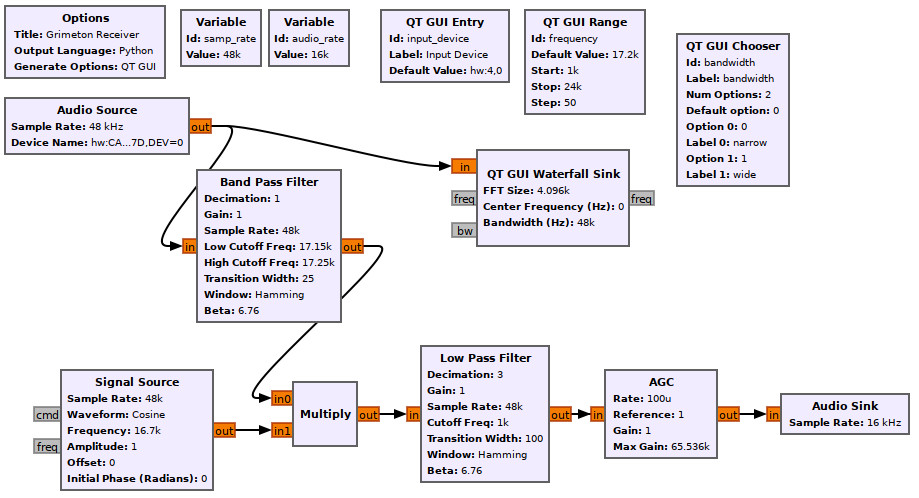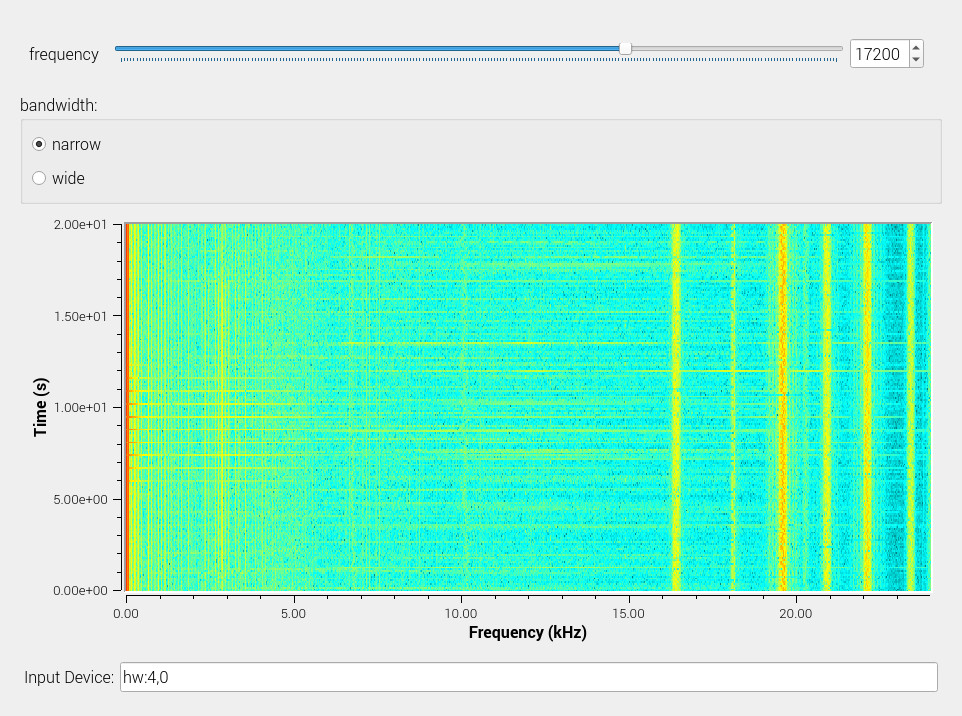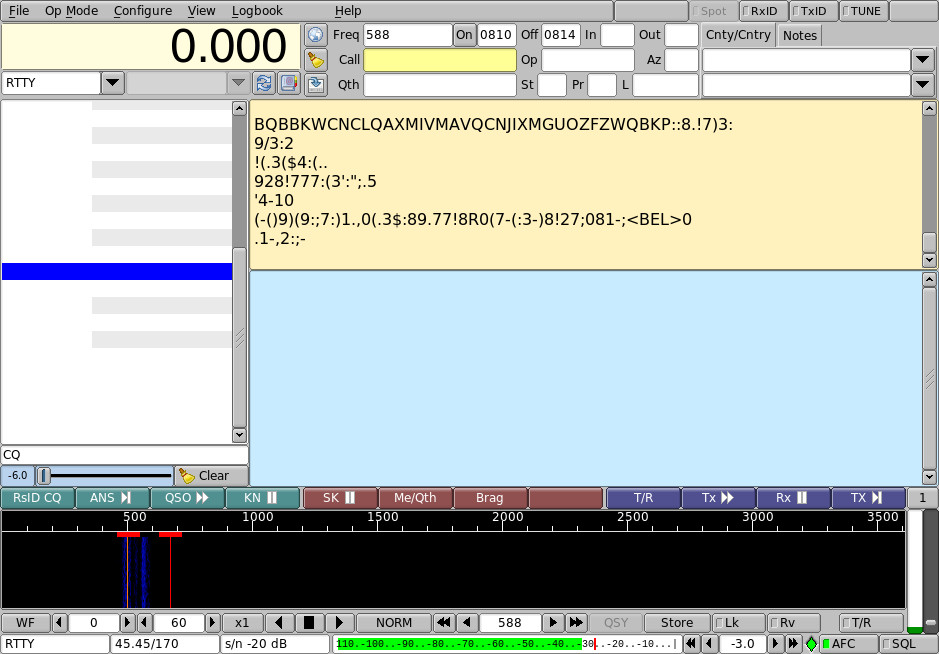
SAQ is a transmitting station in Grimeton, Sweden, that uses an Alexanderson transmitter to send CQ (Morse) on 17.2kHz. The transmitter has a power of 200kW but normally uses less than that.
According to the Alexanderson Society the next transmission after this post will be on 30th June 2024. This post is about my plans to attempt to receive it using the microphone input of a normal soundcard, and a long wire.
The received signal, at 17.2kHz, is low enough to be registered on any high-quality soundcard. The sensitivity of a soundcard microphone input is typically 10mV for full scale output, with an input impedance of 10kΩ For an 8-bit soundcard that means quantisation noise is equivalent to 1/256th of this, which is about 40µV. For a 10-bit soundcard 10µV, for a 16-bit soundcard 0.6µV. In practice, VLF transmissions are likely to significantly exceed this.
Although 17.2kHz is probably audible for most people, some sort of filtering and frequency shifting is called for. So I made a GnuRadio Companion flowgraph to filter out a VLF station and shift the centre frequency to 500Hz.
Ignoring the row of variables along the top, the flow starts with an audio source: in this case our soundcard. (Configuration of this is done via the input_device and samp_rate variables: to get the Grimeton signal the samp_rate must be at least double the Grimeton carrier frequency of 17.2kHz.) The signal is displayed on a waterfall and also passed through a bandpass filter to select the frequency of interest. The bandpass filter is tuned by the frequency variable and has a bandwidth selected by the bandwidth variable. Finally the filtered signal is mixed with a local oscillator signal (bottom left) which is 500Hz less than the frequency variable. The mixed signal from the multiplier is filtered to remove signals above 1kHz (the local oscillator) and the output sent to the audio output of the computer.

This screen capture shows the signals received by a soundcard plugged into my 160m skyloop. The hard red line on the left is mains hum, and horizontal lines are almost certainly lightning. The signals on the right are VLF stations, mostly for submarine communication. A good guide to these transmitters can be found on Wikipedia.

It is possible to use fldigi with the output of the GnuRadio receiver. In Linux I used pulseaudio and set the input of fldigi to be the monitor of the output of the GnuRadio receiver. In the screenshot above it is tuned to the RDL station in Krasnodar, Russia on 18.1kHz. This is an interesting station as the output is intermittent and the modulation mode varies. Most of the submarine stations send with military-grade encryption but RDL sometimes sends codes in clear using CW-FSK — Morse code encoded as CW. By choosing narrow band and tuning off-centre it is possible to receive only the mark signal and filter out the space signal, which makes it possible to decode the Morse by ear or with fldigi.
I used my 160m skyloop and got good results with the other VLF stations. In fact, the signal with the skyloop is so strong for stations in and near Europe, I'd expect much more modest antennas to receive a good signal. Long wires or smaller loops should be sufficient.
In practice the signal received by my 160m loop is around 250mV p-p, so I had to switch from using the microphone input to using the line input. Line input is full scale at 2.2v p-p so the sensitivity of my 16-bit soundcard is about 30µV. In practice the background noise at VLF clearly exceeds that, as can be seen from the screen capture above.
I have not yet received the Grimeton transmissions successfully but I will produce an update page when I have. I am confident now as I can receive RDL which is less than 1kHz away so hopefully Grimeton should be received.